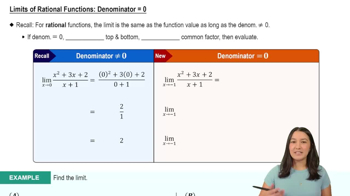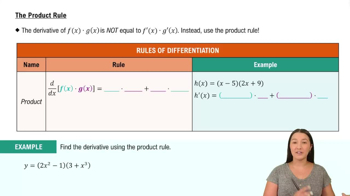Limits of quotients
Find the limits in Exercises 23–42.
limx→−1 (√(x² + 8) − 3) / (x + 1)
 Verified step by step guidance
Verified step by step guidance Verified video answer for a similar problem:
Verified video answer for a similar problem:



 5:21m
5:21mMaster Finding Limits by Direct Substitution with a bite sized video explanation from Patrick
Start learning